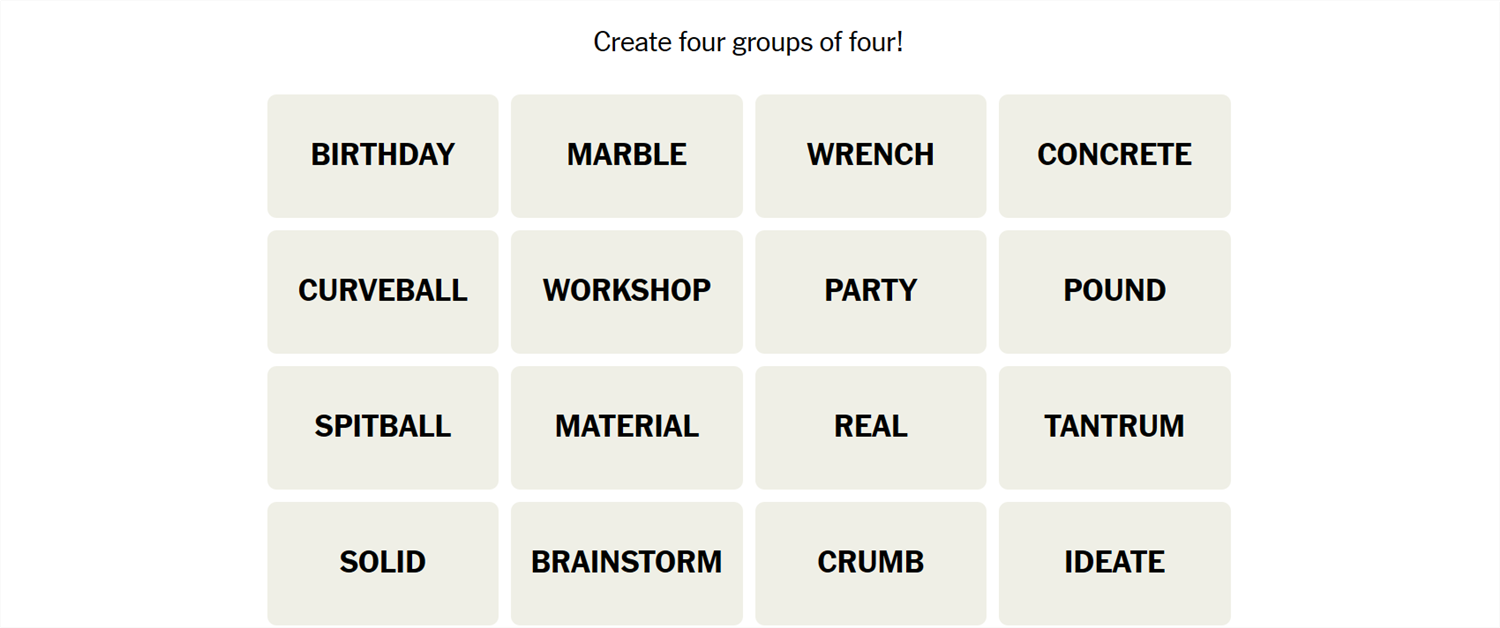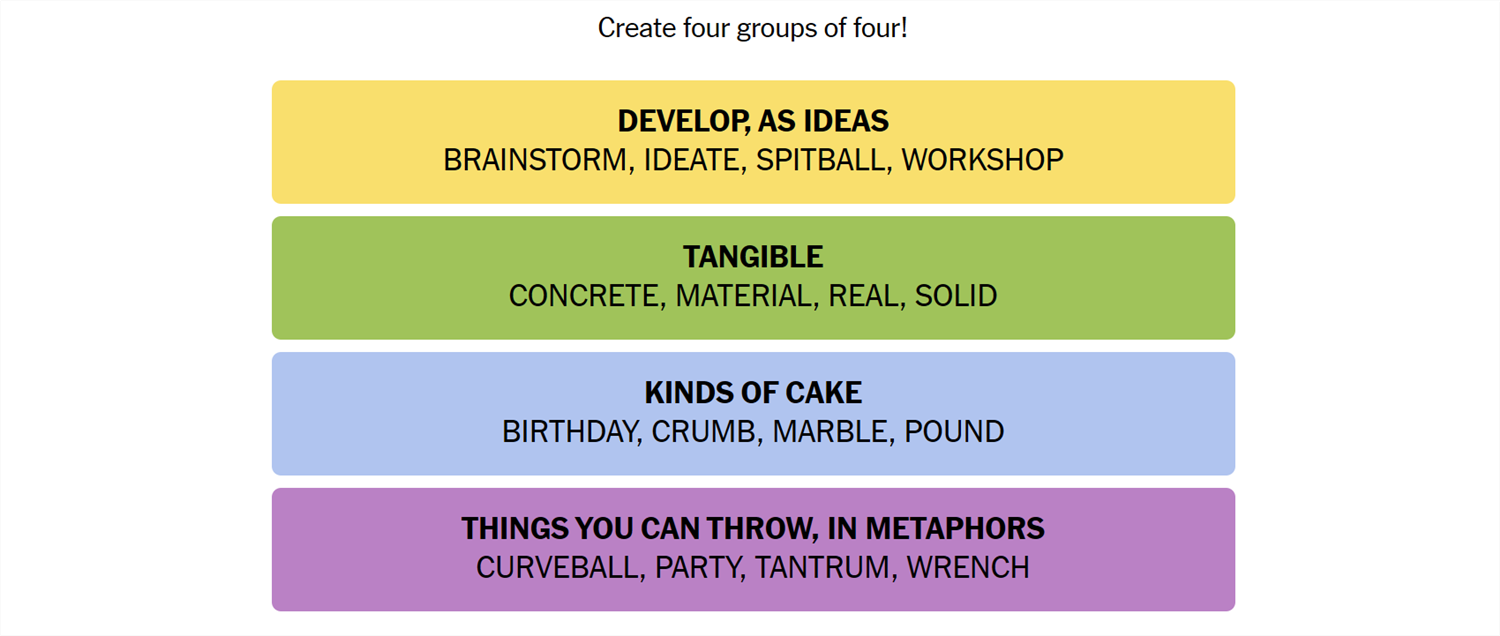Connections is a game from the New York Times that challenges you to find the association between words. It sounds easy, but it isn’t—Connections categories can be almost anything, and they’re usually quite specific. If you need a hand getting the answers, we’ve got you covered.
What Is Connections?
Connections is a game from the New York Times. The objective is simple: sort 16 words into groups of 4. Each group of words will be connected by some common idea or theme. That common element could be anything. We have seen everything from games that rely on the number of letters in the words to categories that require you to spot an extra letter at the end of the word. Sometimes they’re references to economics, other times they reference fairy tales. There is no telling what sort of association there will be between words.
Once you’re confident you understand the connection, select 4 words, then hit “Submit.” You have only four attempts in total, so don’t be too guess-happy.
Hints for Today’s Connections Groups
Here are a few hints for the 388th Connections game to get you started:
- Yellow: Thinking about what to do.
- Green: Something with substance.
- Blue: Something you’d eat for dessert.
- Purple: Figurative language.
If you still need help, the actual group names are:
- Yellow: Develop, as Ideas
- Green: Tangible
- Blue: Kinds of Cake
- Purple: Things You Can Throw in Metaphors
Today’s NYT Connections Answers
Develop, as Ideas (Yellow):
Brainstorm, Ideate, Spitball, Workshop
Tangible (Green):
Concrete, Material, Real, Solid
Kinds of Cake (Blue):
Birthday, Crumb, Marble, Pound
Things You Can Throw in Metaphors (Purple):
Curveball, Party, Tantrum, Wrench
How Did We Solve This Connections Game?
July 3rd was pretty straight forward.
The first word I went with was brainstorm. It really only has one meaning, which is always a good sign. It is very close to synonymous with ideate, spitball, and workshop, too, which made them natural picks. Together, they were in the Yellow group, “Develop, as Ideas.”
Concrete can refer to a material, but it can also be used more figuratively to indicate that something is tangible, strong, or substantial. Nothing matched the physical definition, but material, real, and solid are all commonly used interchangeably with concrete, especially when you say something like “I have a concrete proposal.” They were in the Green group, “Tangible.”
Birthday, crumb, marble, and pound are all “Kinds of Cake”—a category I got immediately because I spend entirely too much time thinking about baked goods. “Kinds of Cake” was the Blue group.
That left curveball, party, trantrum, and wrench. These were a bit harder to puzzle out, but knowing they were in the Purple group helped a bit, since it tends to be less literal. I muttered the words out loud, which was enough to help me connect that they’re all things that can be figuratively thrown. Though, a curveball and a wrench can be thrown physically, too.
The Purple group was “Things You can Throw in Metaphors.”
How Do You Guess Connections Groups?
There is no quick, reliable way to approach Connections like there is with Wordle, since Connections isn’t algorithmic. However, there are a few things to keep in mind that can help.
- Look for similar parts of speech. Are some words verbs and others nouns? Are some adjectives? Try mentally grouping them based on those categories and see if any other patterns jump out at you.
- Are the words synonyms? Sometimes categories will just be synonyms for a phrase, or very close to synonyms. Don’t rely too closely on this, though. Occasionally, Connections will deliberately throw in words that are sometimes synonyms to mislead you.
- Try saying the words. Sometimes, saying the words helps. One puzzle we saw included the words go, rate, faster, clip, pace, speed, move, commute, and hurry—all of which are obviously related to the idea of motion. However, when you say them, it becomes a little more obvious that only four (go, move, hurry, faster) are things you’d actually say to prompt someone to get moving.
- Expect the red herring. Connections usually has words that could be plausibly, yet incorrectly, grouped together. Take the words Bud, Corona, and Light, as an example. You might instinctively see those three words together and assume they’re lumped together in a category related to beer—but they weren’t.
- Look for distinct words. If a word on your board doesn’t have multiple meanings or can really only be used in one context, try using that word as the basis for a category.
- Shuffle the board. Sometimes, moving words around will help you look at them in new ways.
If you didn’t solve this one, don’t feel too bad—there’s always tomorrow! And those words may align with a topic you’re interested in, giving you a leg up on the competition.






